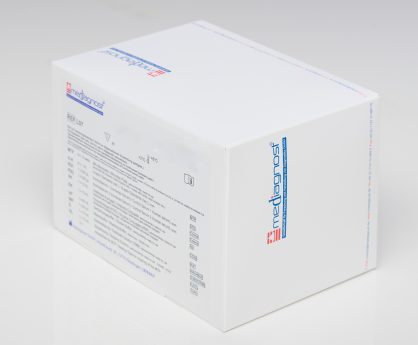Vaspin ELISA Assay Kit
The Vaspin ELISA Assay Kit is For Research Use Only
Size: 1×96 wells
Sensitivity: 4 pg/ml
Incubation Time: 3.5 hours
Sample Type: Serum
Sample Size: 70 µL
Alternative Name: Visceral adipose-specific serine protease inhibitor
Product manufactured by Mediagnost
Assay Principle
The Eagle Biosciences Vaspin ELISA Assay Kit is a so-called Sandwich-Assay. It utilizes specific and high affinity polyclonal antibodies for this protein. The Vaspin in the samples binds to the immobilized first antibody on the microtiter plate. In the following step, the biotinylated antibody binds in turn to Vaspin. After washing, Streptavidin-Peroxidase-Enzyme conjugate will be added, which will bind highly specific to the biotin and will catalyse the enzymatic reaction, which turns the colour of the substrate, quantitatively depending on the Vaspin level of the samples. The diagnostic value of Vaspin remains unclear, conflicting results question its value as biomarker for visceral or total adipose tissue. As well as regarding insulin resistance while in children Vaspin might correlate with insulin sensitivity1 but in adults no correlation was found4. The Eagle Biosciences Vaspin ELISA Assay Kit is a tool for the further investigation and validation of Vaspin as a biomarker for the visceral adipose tissue, insulin sensitivity and glucose tolerance.



